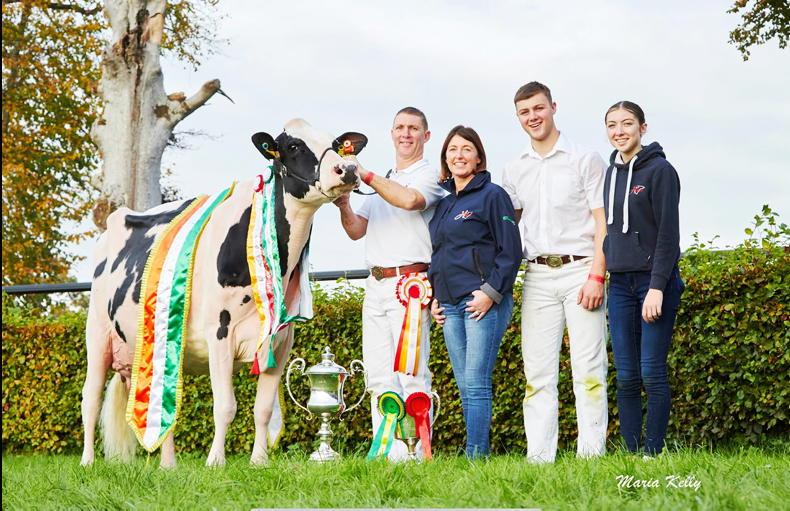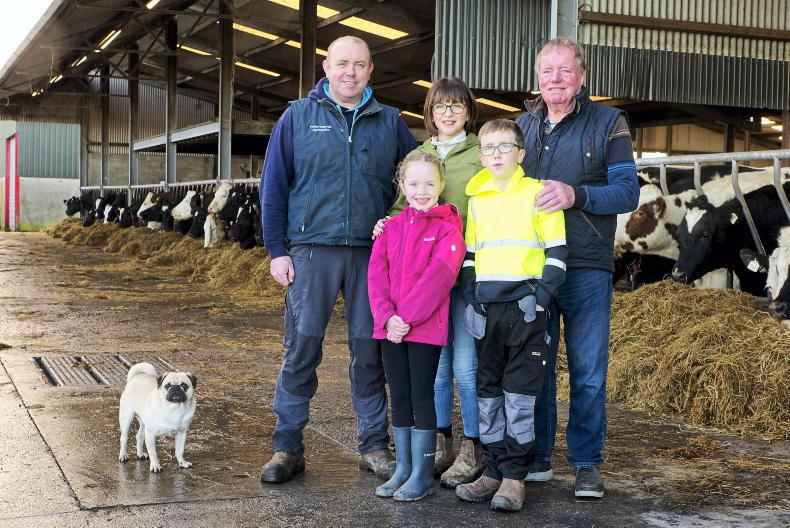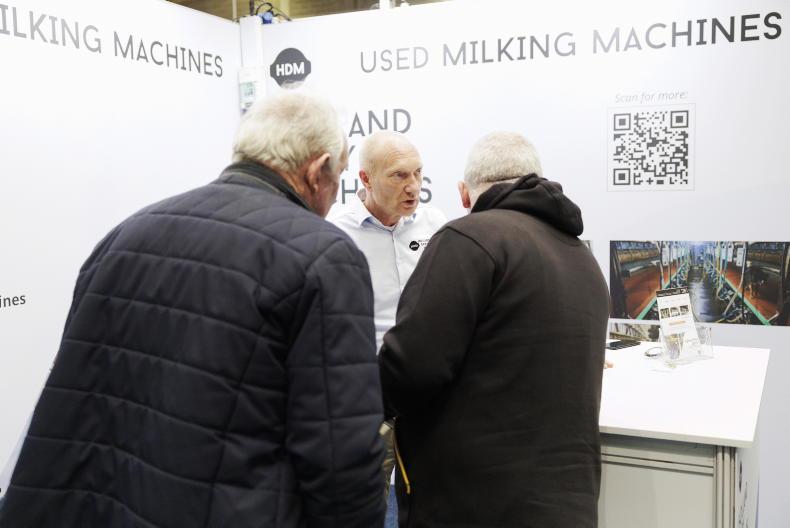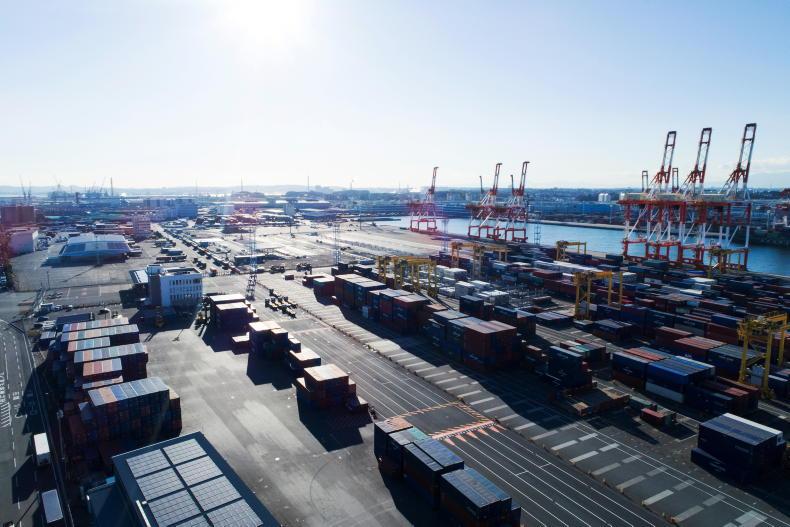Hendrick Jan De Jongh is farming 70ha in Lienden, near Amsterdam in the Netherlands, where he has a herd of 130 Holstein Friesian cows.

The cows are averaging 9,000 litres per annum.
It is a predominantly family-run operation and, in 2003, they went from 80 cows to 120 cows.

The cows are doing 4.3% fat and 3.6% protein.
The 70ha farmed is a mixture of owned and rented land and the family have been milking cows since 1973.

Hendrick Jan De Jongh with his dad Tom and son Hidde.
On this farm and like the majority of farms in Holland, the cows are housed indoor and calve year-round.
However, Hendrick keeps his cows outside for a total of 120 days throughout the year in order to be eligible for a 2c/l bonus that his co-op Leerdammer offers.

The cow shed where a Lely Juno keeps silage pushed in on a regualr basis.
In relation to breeding, Hendrick AI’s everything, but doesn’t use any sexed semen. The cows get inseminated on day 60 and his average calving interval is 400 days.

Cows calve all indoors and all year round in the Netherlands.
SenseHub collars have been on the cows since July and results so far have been successful, according to Hendrick.
“It helps me to see them in heat, which is important. I used to AI 10 or 15 every month, but now I’m inseminating 40 cows per month,” Hendrick explained.

Cows fitted with SenseHub heat detection and health monitoring collars.
This herd of cows gets IBR and BVD vaccines, but don’t get vaccinated against salmonella.
The vet comes every month to scan cows and Hendrick trims the cows’ hooves himself regularly.

These eco slats reduce the amount of ammonia released from the slurry in the tank.
Milk recording is also done every five to six weeks on the farm as another emissions reduction measure.
Across Holland in general, 95% of dairy farmers milk record.
The market for calves in Holland is quite strong, with this farm's Belgian Blue bull calves selling for €350 and heifers selling for €250. Friesian bull calves are coming in at the €150 mark.
All calves are sold after two weeks of age.

Calves are reared in these hutches for the first two weeks of life.
Four to five cuts of silage are made on this farm per year and ensiled in a silage pit.

This Lely Juno has been in place for three years.
Derogation
Like the majority of farmers in Holland, they are experiencing increased pressure from the government which seeks to reduce emissions from agriculture by 50%.
The final draft decision from Brussels shows that 2022 will be the final year that derogation farmers in the Netherlands will be permitted to reach the 250kg N/ha granted to Ireland.
Hendrick told the Irish Farmers Journal that farming without a derogation will be a huge financial strain on the farm.
Hendrick Jan De Jongh is farming 70ha in Lienden, near Amsterdam in the Netherlands, where he has a herd of 130 Holstein Friesian cows.

The cows are averaging 9,000 litres per annum.
It is a predominantly family-run operation and, in 2003, they went from 80 cows to 120 cows.

The cows are doing 4.3% fat and 3.6% protein.
The 70ha farmed is a mixture of owned and rented land and the family have been milking cows since 1973.

Hendrick Jan De Jongh with his dad Tom and son Hidde.
On this farm and like the majority of farms in Holland, the cows are housed indoor and calve year-round.
However, Hendrick keeps his cows outside for a total of 120 days throughout the year in order to be eligible for a 2c/l bonus that his co-op Leerdammer offers.

The cow shed where a Lely Juno keeps silage pushed in on a regualr basis.
In relation to breeding, Hendrick AI’s everything, but doesn’t use any sexed semen. The cows get inseminated on day 60 and his average calving interval is 400 days.

Cows calve all indoors and all year round in the Netherlands.
SenseHub collars have been on the cows since July and results so far have been successful, according to Hendrick.
“It helps me to see them in heat, which is important. I used to AI 10 or 15 every month, but now I’m inseminating 40 cows per month,” Hendrick explained.

Cows fitted with SenseHub heat detection and health monitoring collars.
This herd of cows gets IBR and BVD vaccines, but don’t get vaccinated against salmonella.
The vet comes every month to scan cows and Hendrick trims the cows’ hooves himself regularly.

These eco slats reduce the amount of ammonia released from the slurry in the tank.
Milk recording is also done every five to six weeks on the farm as another emissions reduction measure.
Across Holland in general, 95% of dairy farmers milk record.
The market for calves in Holland is quite strong, with this farm's Belgian Blue bull calves selling for €350 and heifers selling for €250. Friesian bull calves are coming in at the €150 mark.
All calves are sold after two weeks of age.

Calves are reared in these hutches for the first two weeks of life.
Four to five cuts of silage are made on this farm per year and ensiled in a silage pit.

This Lely Juno has been in place for three years.
Derogation
Like the majority of farmers in Holland, they are experiencing increased pressure from the government which seeks to reduce emissions from agriculture by 50%.
The final draft decision from Brussels shows that 2022 will be the final year that derogation farmers in the Netherlands will be permitted to reach the 250kg N/ha granted to Ireland.
Hendrick told the Irish Farmers Journal that farming without a derogation will be a huge financial strain on the farm.


















SHARING OPTIONS